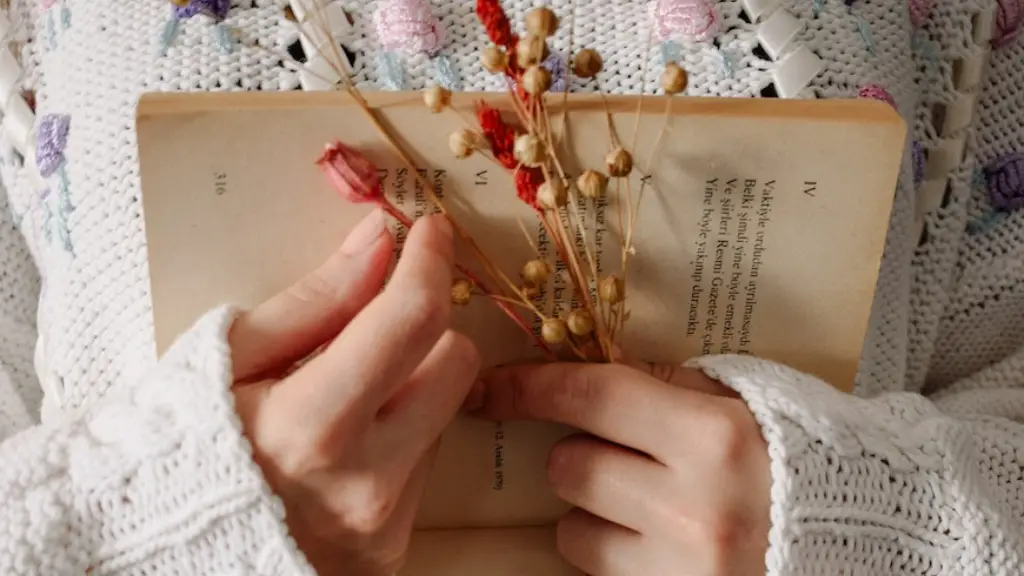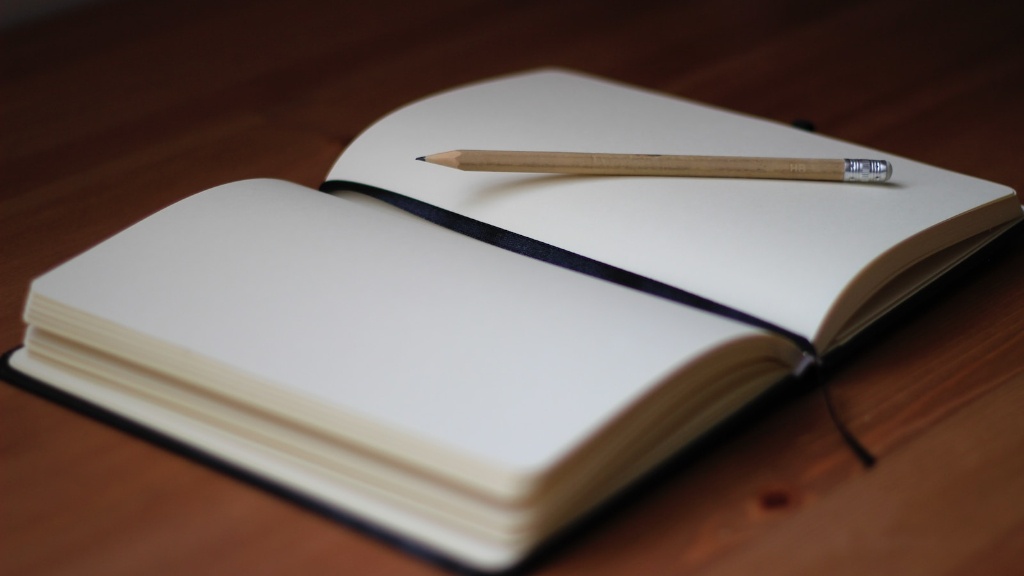What is sensory detail in poetry? Sensory detail in poetry is the use of words and descriptions to evoke the five senses – sight, sound, smell, taste, and touch – in order to captivate the reader and create an emotional response. Poets convey meaning through imagery, alluding to sights, sounds, tastes, smells, and physical sensations. When used effectively, sensory detail can connect the reader to the natural world as well as to others and to the poet’s own thoughts and feelings, creating a bond between two people with words.
To invoke the readers’ senses, poets may use words and descriptions related to sensory experience. For example, a poet could describe a sound by alluding to the chirping of birds, the low rumble of thunder, or the creaking of a door. Or they could build a picture with references to a crisp autumn sky, a glimmering lake, or the shadows of trees in the night.
Moreover, poets may evoke other senses using metaphor, similes, and rhythmic Alliteration. Through metaphors, poets can make an idea more tangible for the reader. For example, comparing a person’s life to an endless journey provides a powerful image for readers. Similes are used to compare two things for the purpose of describing one in terms of the other. The use of alliteration is a popular tool used in poetry and is the repetition of the initial sound of a word. Its use adds a musical element to the poem, giving it a unique rhythm and style.
Not only are the senses of sight, sound, smell, taste, and touch used in poetry, but many poems also use figurative language to evoke emotion and thought. For example, a metaphor is a figure of speech that presents an object or concept in a way that it becomes analogous to another object or concept. Metaphors are effective because they can help readers to visualize an idea in a very short time. Similarly, imagery is used to amplify a message or idea with vivid mental pictures that give corresponding sensory impressions. By using figurative language, poets can vividly describe the world around them, and at the same time, evoke emotion in the reader.
Finally, sensory detail in poetry can be enhanced by its use of rhythm. Rhythm is the element of poetry which relates to the structures, sounds, and beat of the poem. Rhythm can be created by repeating syllabel patterns, or by using certain words that may sound similar. A poet may also use repetition to establish and emphasize a certain sound, or to create a pattern that readers can follow in their minds. This can make the poem sound musical, which can help to evoke an emotional response in the reader.
Letting the Reader Know What is Being Described
In order to create a strong sense of sensory detail in poetry, it is important to make sure the readers are aware of what is being described. This can be done through the use of adjectives, adverbs, and figurative language. These tools help the reader form a scene in their mind, allowing them to visualize the poem and its associated emotions.
Furthermore, the use of sensory detail may also bring the reader into a certain place or time period. This can help the reader understand the message of the poem more fully, providing a context that they can better relate to. For example, by describing a sunset as beautiful, a poet can not only create an emotional response, but also evoke a particular time of day. Similarly, by making reference to a blossoming flower, the poet opens up a springtime scenario for their reader.
In conclusion, sensory detail in poetry is an essential element that can help create vivid images and evoke strong emotions. By making use of words, metaphor and figurative language, poets can provide the reader with a deeper understanding of the world that surrounds them. The use of rhythm can help to build an emotional connection between the reader and the poem, making it a powerful tool for conveying meaning.
History of Sensory Detail in Poetry
Sensory detail in poetry has been used for centuries and has been found in works from authors from all over the world. In ancient Rome, the poet Virgil used vivid descriptions of the natural world to evoke emotion and create mental images for his readers. Similarly, ancient Chinese poetry often used metaphors and imagery to paint a picture of the author’s environment and beliefs. Finally, in Medieval Europe, sensory detail was used to create epic scenes in long narrative poems.
Over the centuries, authors have employed sensory detail in unique ways to create powerful and moving works of art. For example, in his poem “The Lamb,” the English poet William Blake used sensory detail to create an emotional landscape in which his readers could journey. Additionally, in his poem “The Tyger,” he used powerful imagery to evoke fear and wonder in his readers. In the 20th century, sensory detail was used as a vehicle for political commentaries, as seen in poems such as “The Unknown Citizen” by W.H. Auden.
Sensory detail has also been used in modern forms such as rap, hip-hop, and spoken word. In these forms, the use of sounds and rhythm is essential in conveying meaning to the audience. Similarly, in rap music, the use of imagery and figurative language is essential in order to build a powerful and moving experience.
Significance of Sensory Detail in Poetry
Sensory detail is an important element in poetry because it provides readers with the tools to construct vivid mental pictures. It also allows authors to express their ideas, feelings, and opinions in a creative and effective way that resonates with readers. Moreover, it creates an emotional bond between reader and author, making it a powerful tool for conveying meaning and emotion. Through the use of sensory detail, readers can be taken to new worlds, both real and imagined, allowing them to explore new ideas, inspirations, and possibilities.
Sensory detail can also be used to elaborate on a moral lesson. For example, a poet may employ vivid imagery to comparison the beauty of nature to the complexity of human life. Additionally, poets use sensory detail in order to convey deeper meanings and symbols. By carefully crafting words and phrases, a poet can open up his works to several interpretations and lend new layers of understanding to his readers.
Finally, sensory detail is also a powerful tool for connecting authors and readers. Through a lucid and vivid language, poets can make their reader feel as if they are a part of the poem’s story. When used effectively, this connection can provide readers with a unique understanding of the poem’s message, as well as its underlying meaning.
How to Incorporate Sensory Details in Poetry
When incorporating sensory detail in poetry, it is important to consider how the images and emotion will be communicated to the reader. The poet should select sensory detail that is relevant to the work at hand and that serves to convey the desired meaning or emotion. Additionally, it is important to be mindful of the use of figurative language and metaphor. It is also important to ask oneself if the description is necessary for the overall effect. It is essential to remember that simplicity is key in creating effective works of art.
Moreover, poets should take advantage of their writing environment. By taking advantage of their environment, poets can utilize their surroundings to create a sense of atmosphere and bring the poem to life. Poets should also consider the use of contrast in their writing. Contrasting visuals and metaphors can help to amplify the poem’s intended emotion, creating a deeper understanding for the reader.
Lastly, poets should be mindful of the rhythm and style they use while writing. Varying the poem’s rhythm can help create a more effective and emotive piece of art. Similarly, the poet should experiment with different styles and use of language to find the best words to express their message clearly and effectively.
Conclusion
Sensory detail in poetry is an important element that can be used to create powerful works of art and evoke emotion in the reader. By making use of words and descriptions related to sensory experience, poets can provide the reader with a vivid representation of the world around them. Additionally, poets may employ the use of figurative language and rhythm to create an emotional connection between reader and author. Ultimately, sensory detail can provide readers with a unique understanding of the poem’s message, as well as its underlying meaning.




